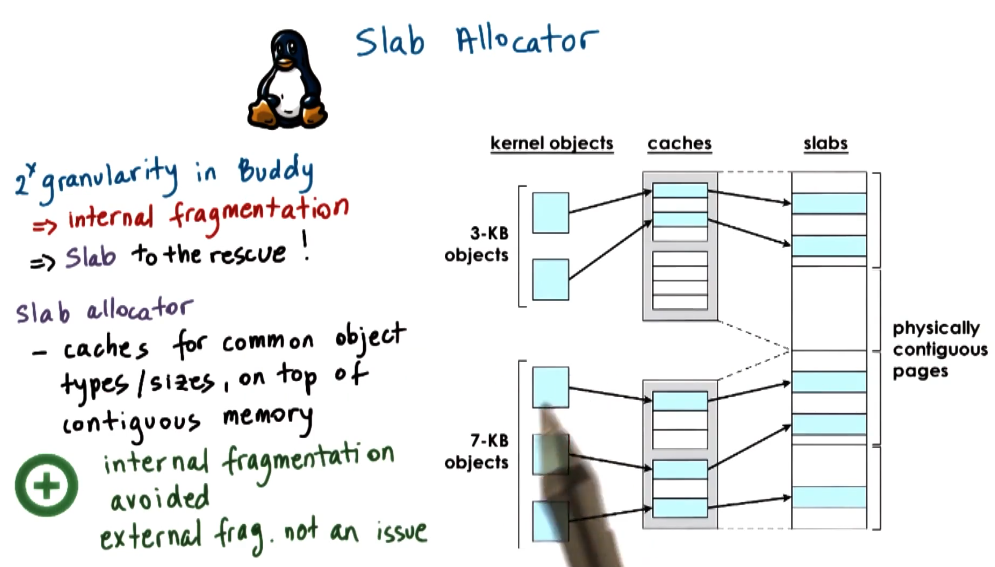Slab allocator
The slab allocator is a memory allocator used in the linux kernel to efficiently allocate and reuse small, fixed-size objects (e.g., process descriptors, file system inodes).
How It Works
- Preallocation of Objects
- Memory is divided into large contiguous regions called slabs.
- Each slab is further divided into fixed-size chunks, each designed to hold a specific type of kernel object (e.g., task structs, buffers).
- Object Reuse & Caching
- Instead of frequently allocating and freeing memory from the general heap, the slab allocator maintains a cache of preallocated objects.
- When a new object is needed, it is taken from an available slot in a slab, avoiding costly memory allocation operations.
- Memory Efficiency
- Because objects fit exactly into slab slots, there is no internal fragmentation or external fragmentation.
- Slabs can be partially filled, fully allocated, or completely free. Fully free slabs can be released back to the system, reclaiming memory.
Advantages & Trade-offs
Fast allocation & deallocation: Objects are preallocated and reused.
No fragmentation: Objects fit precisely into preallocated slabs.
Efficient for frequently used objects: Great for kernel structures like inodes, task structs, and buffers. Not ideal for variable-sized allocations: Works best when objects are of predictable, uniform sizes.
